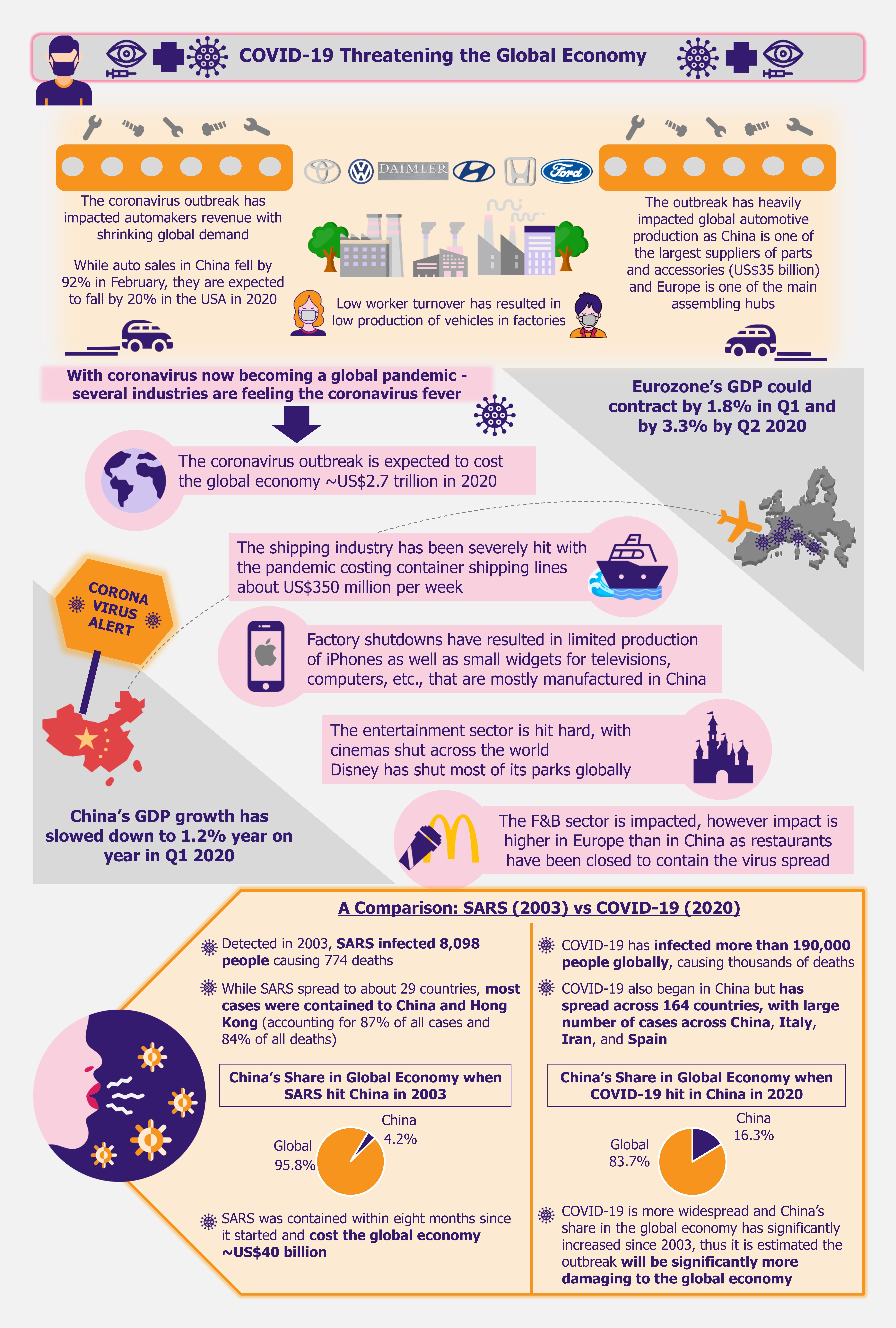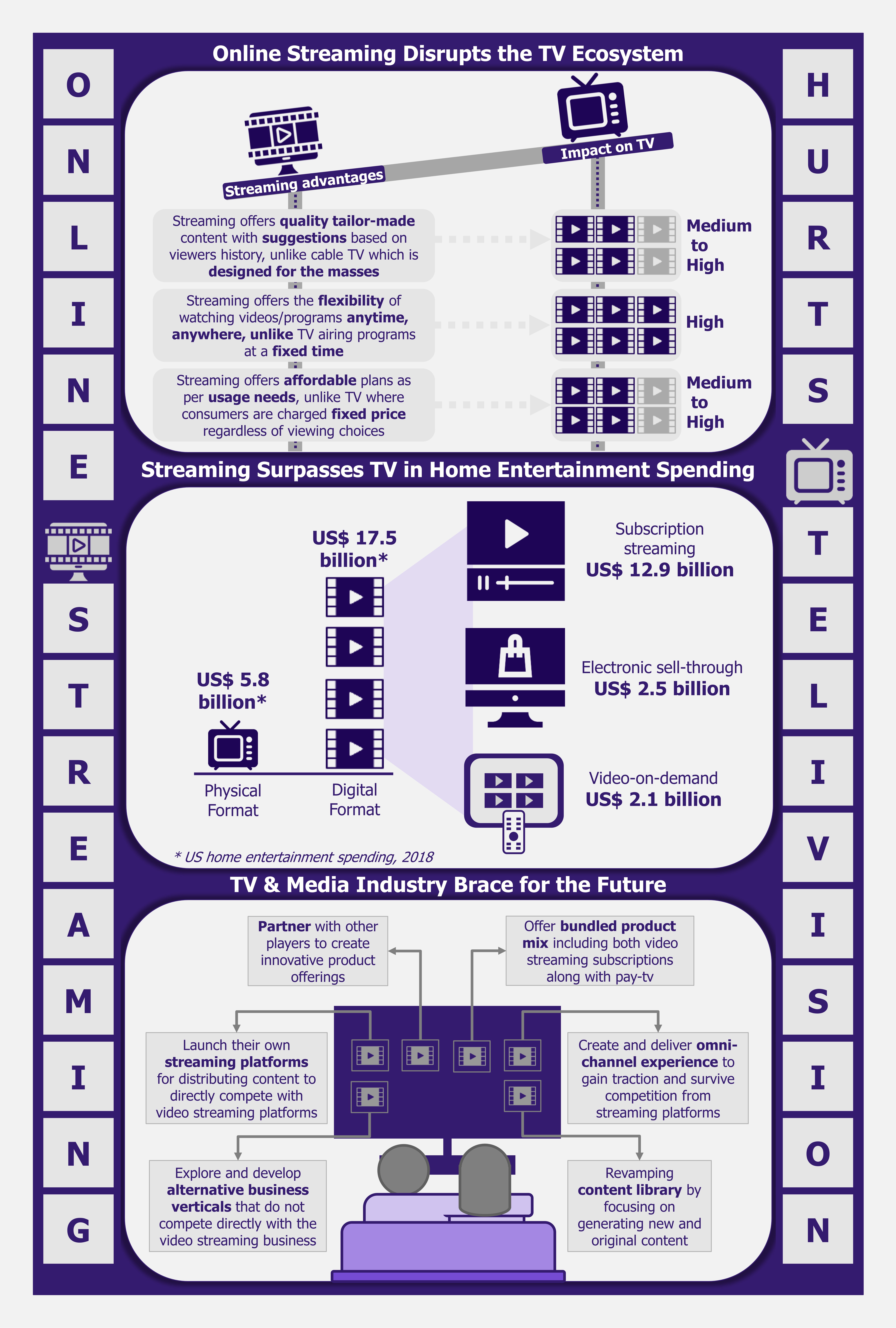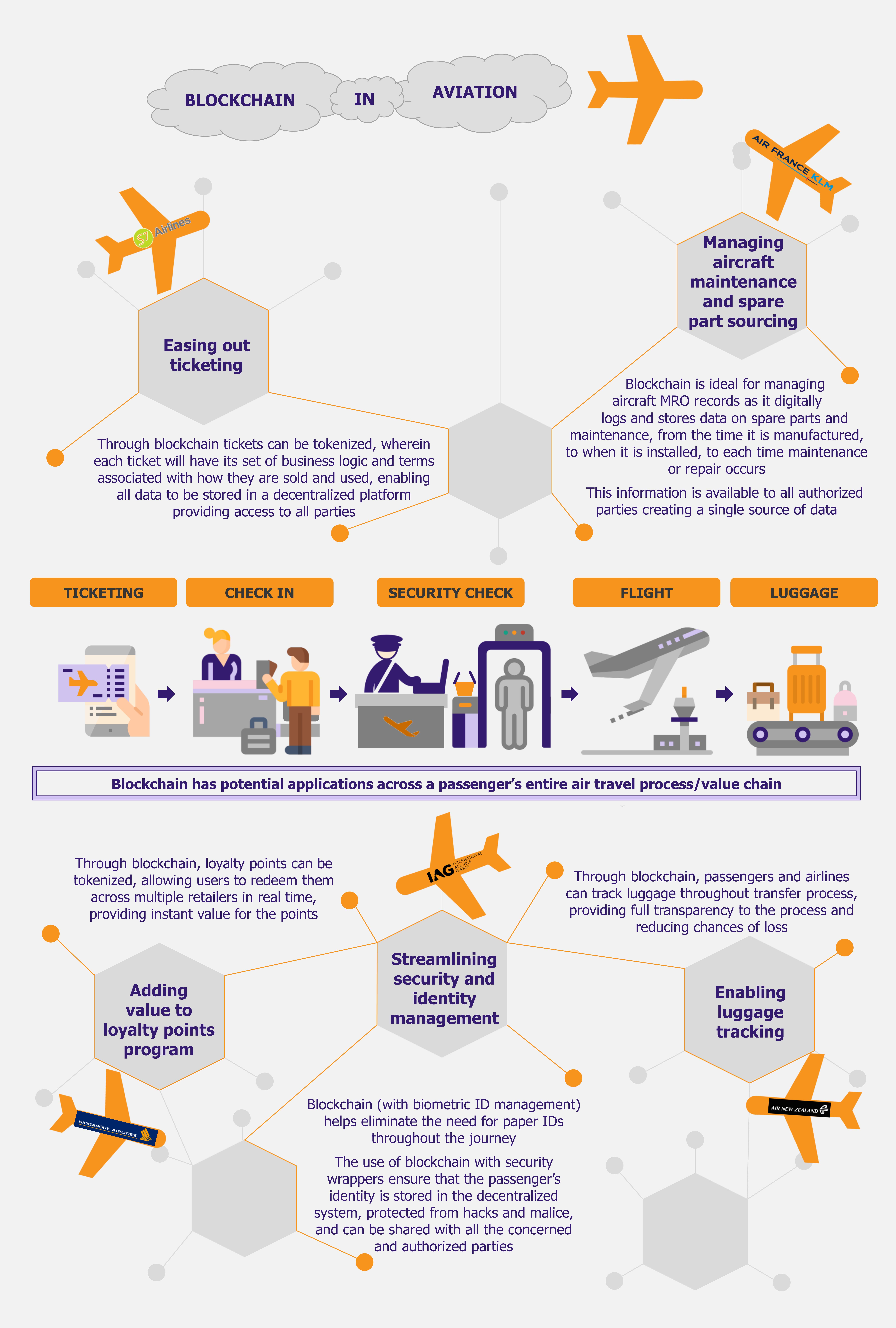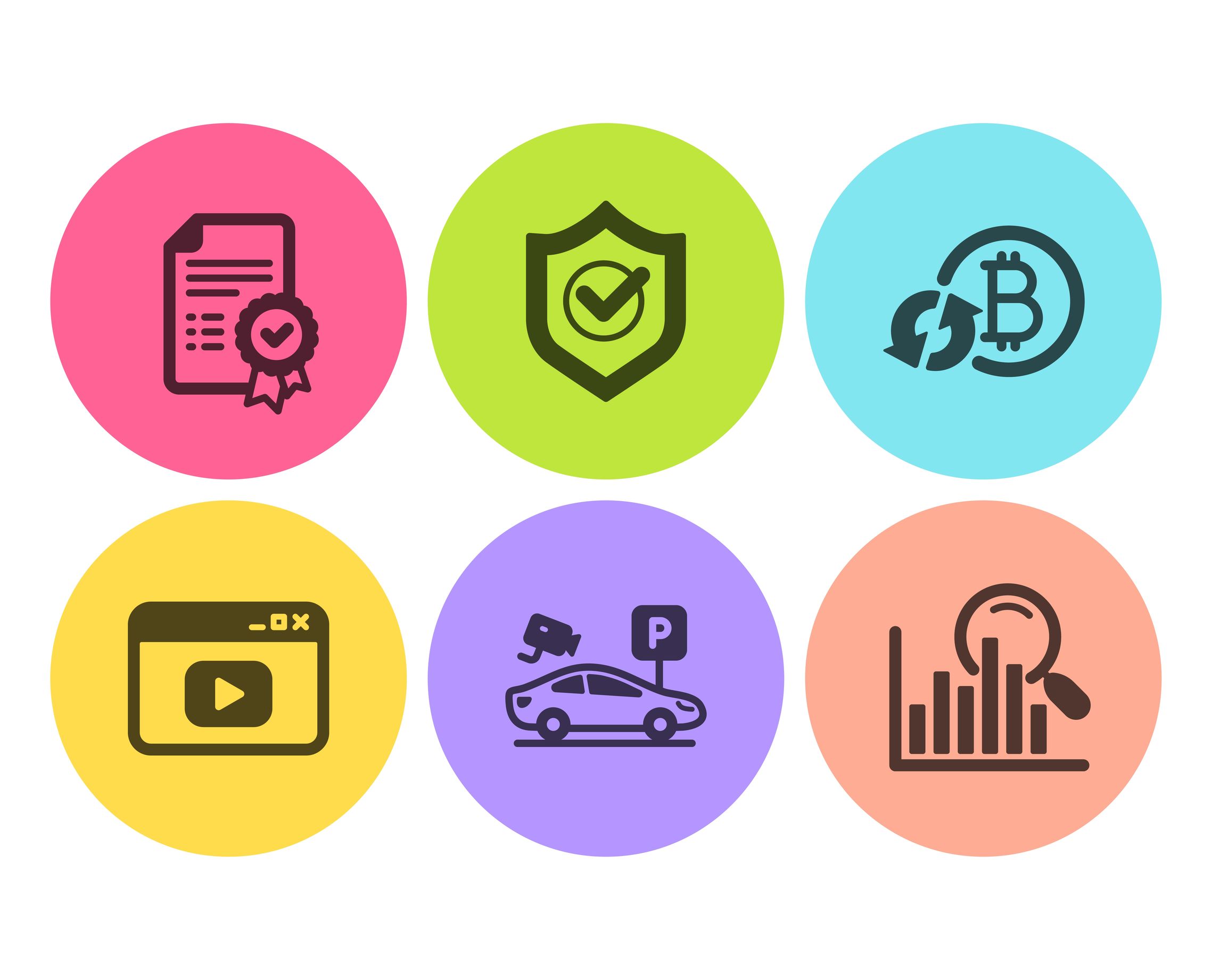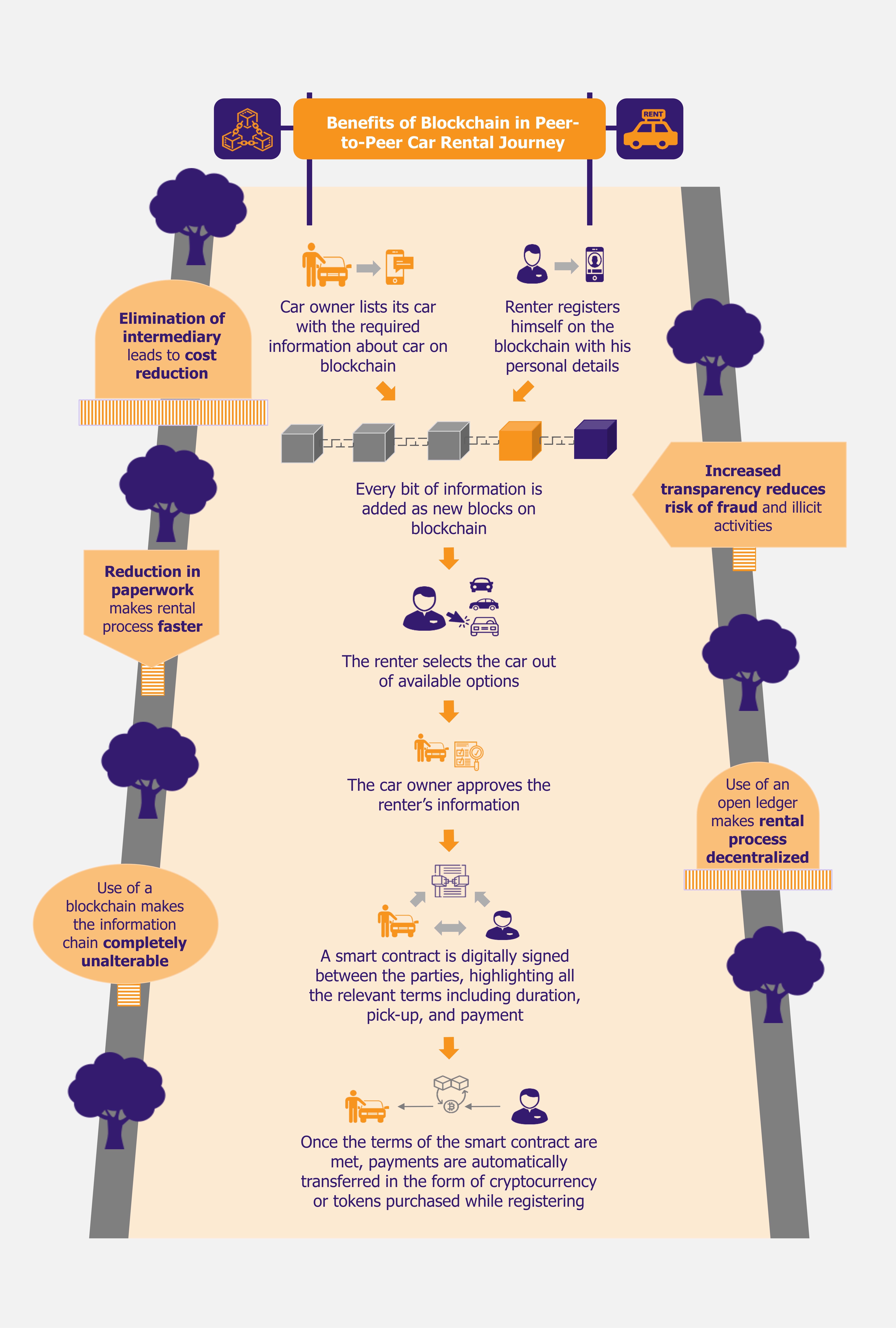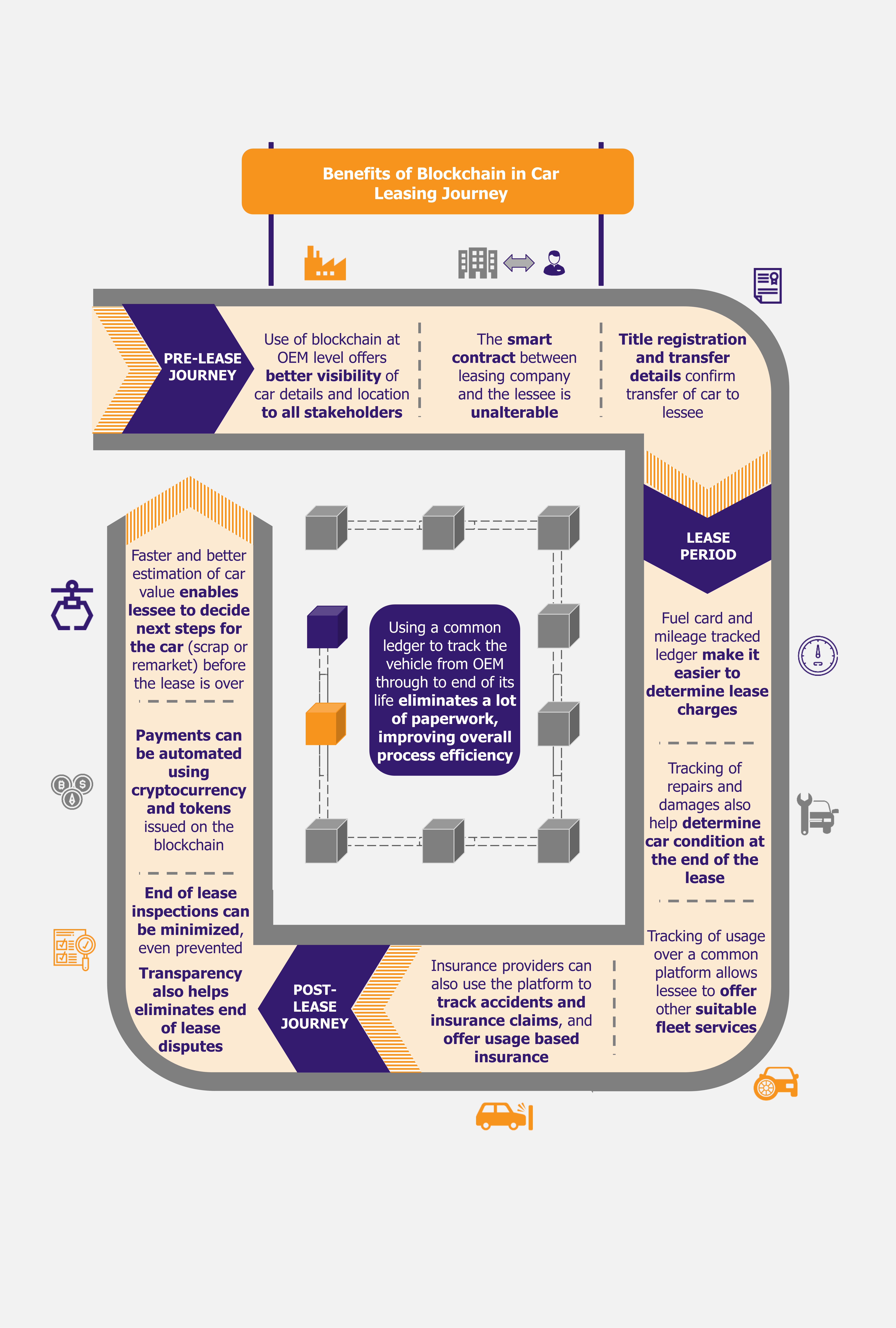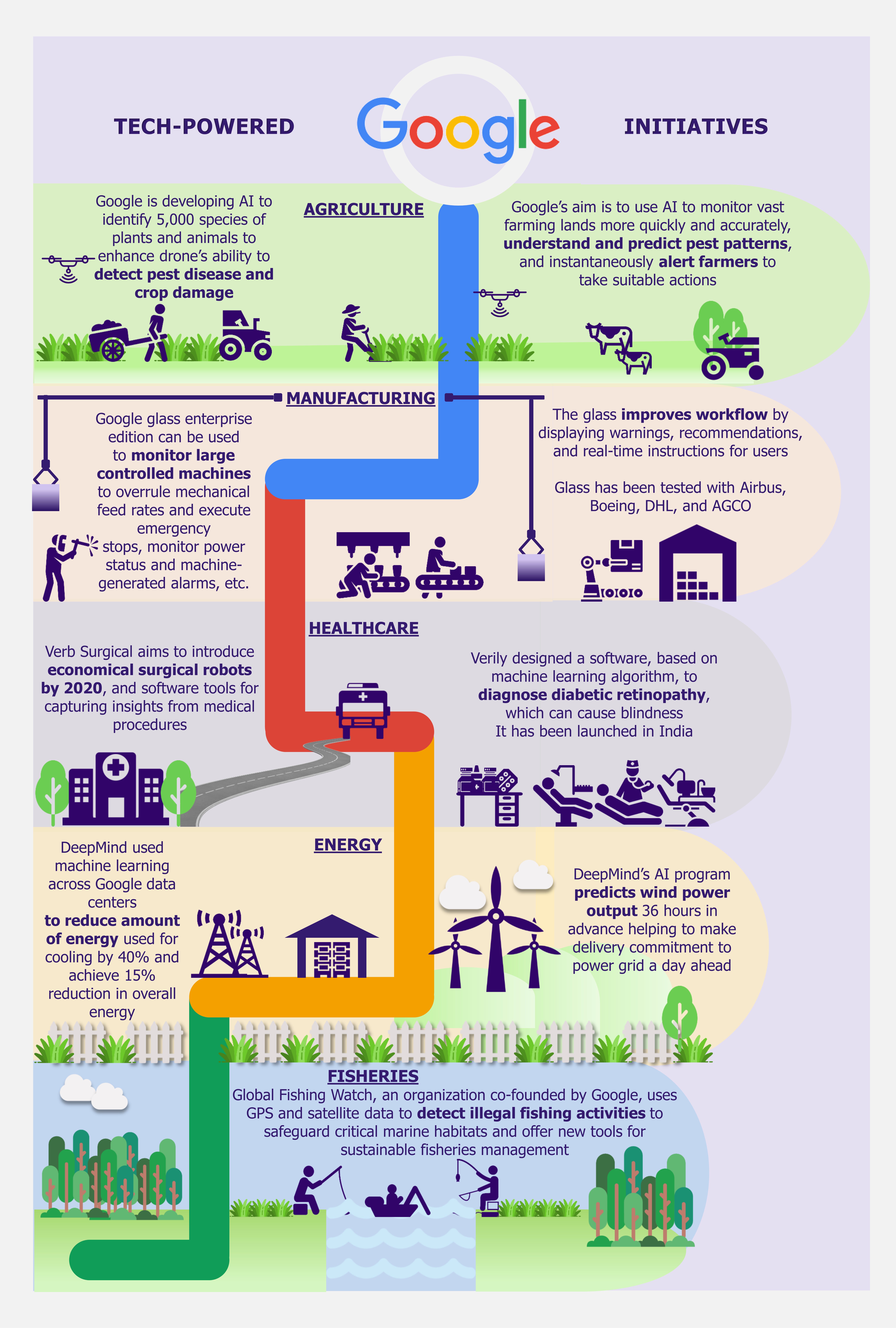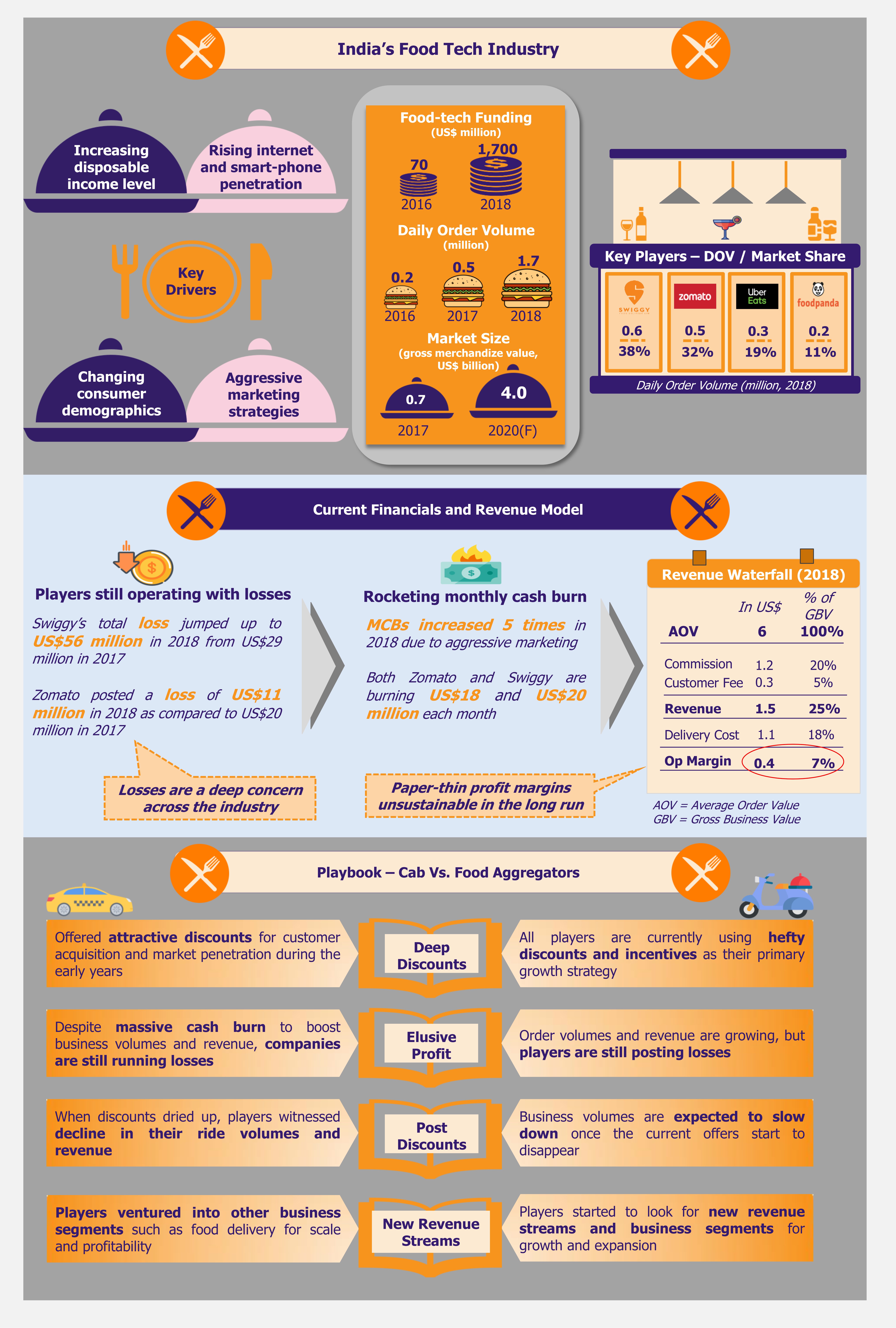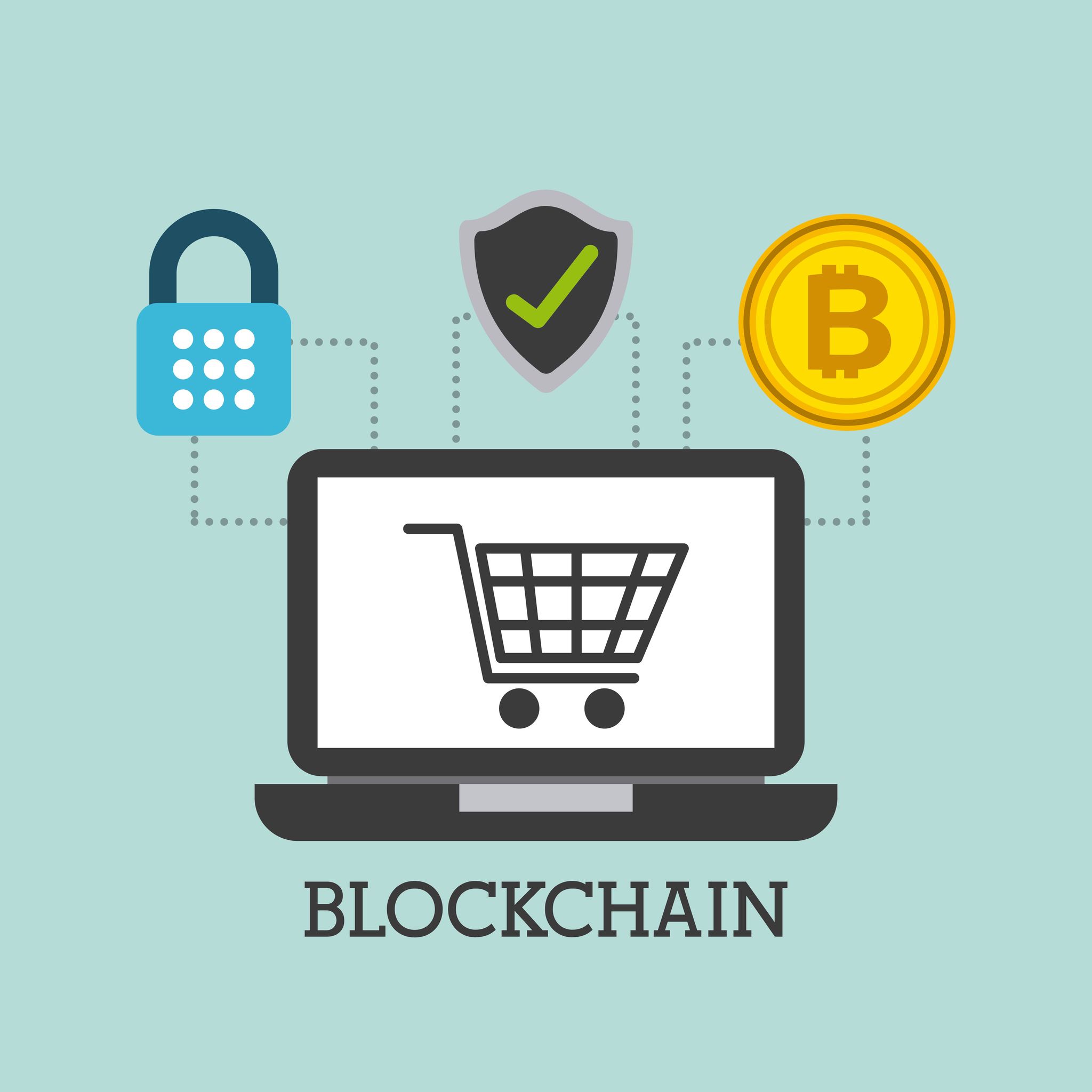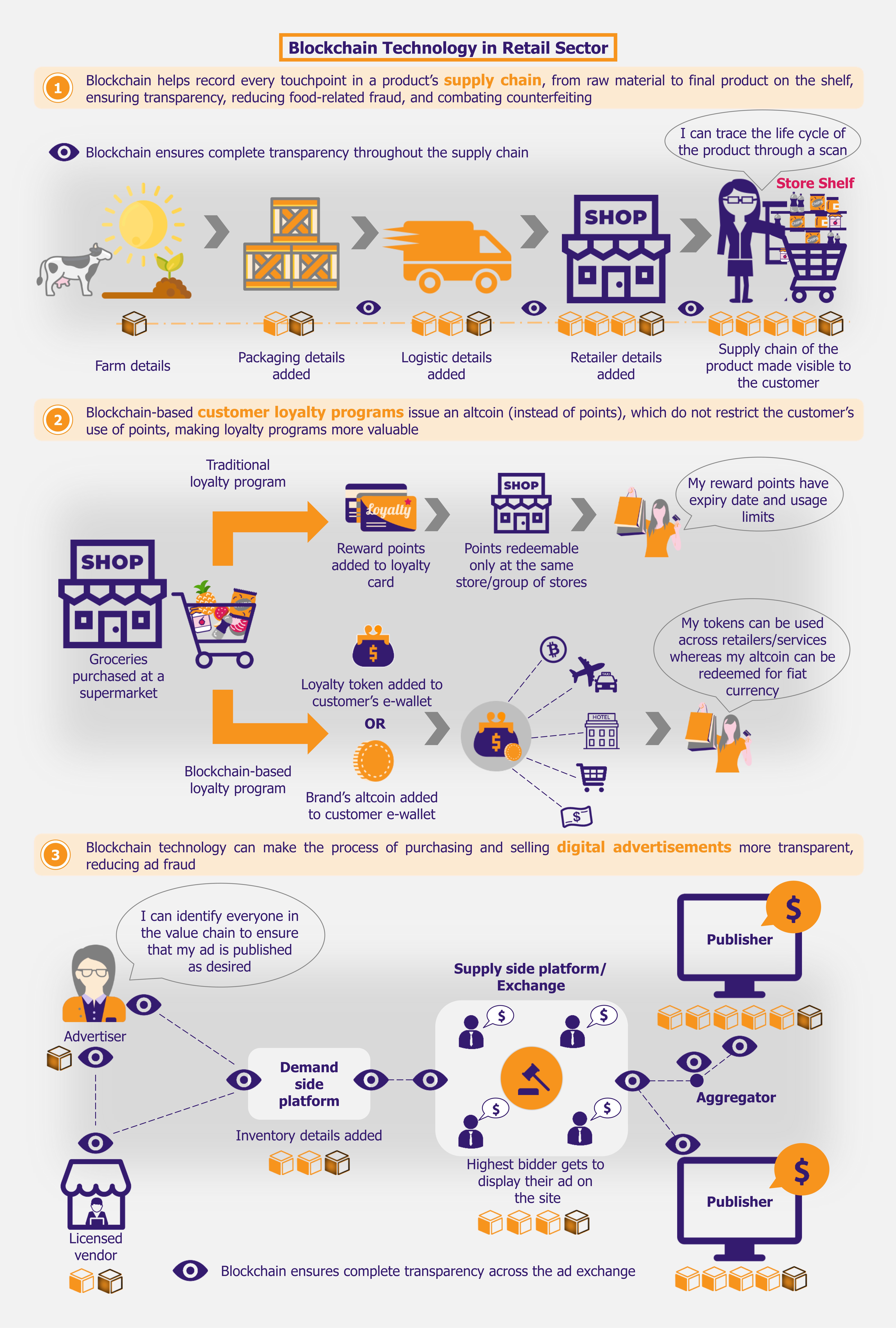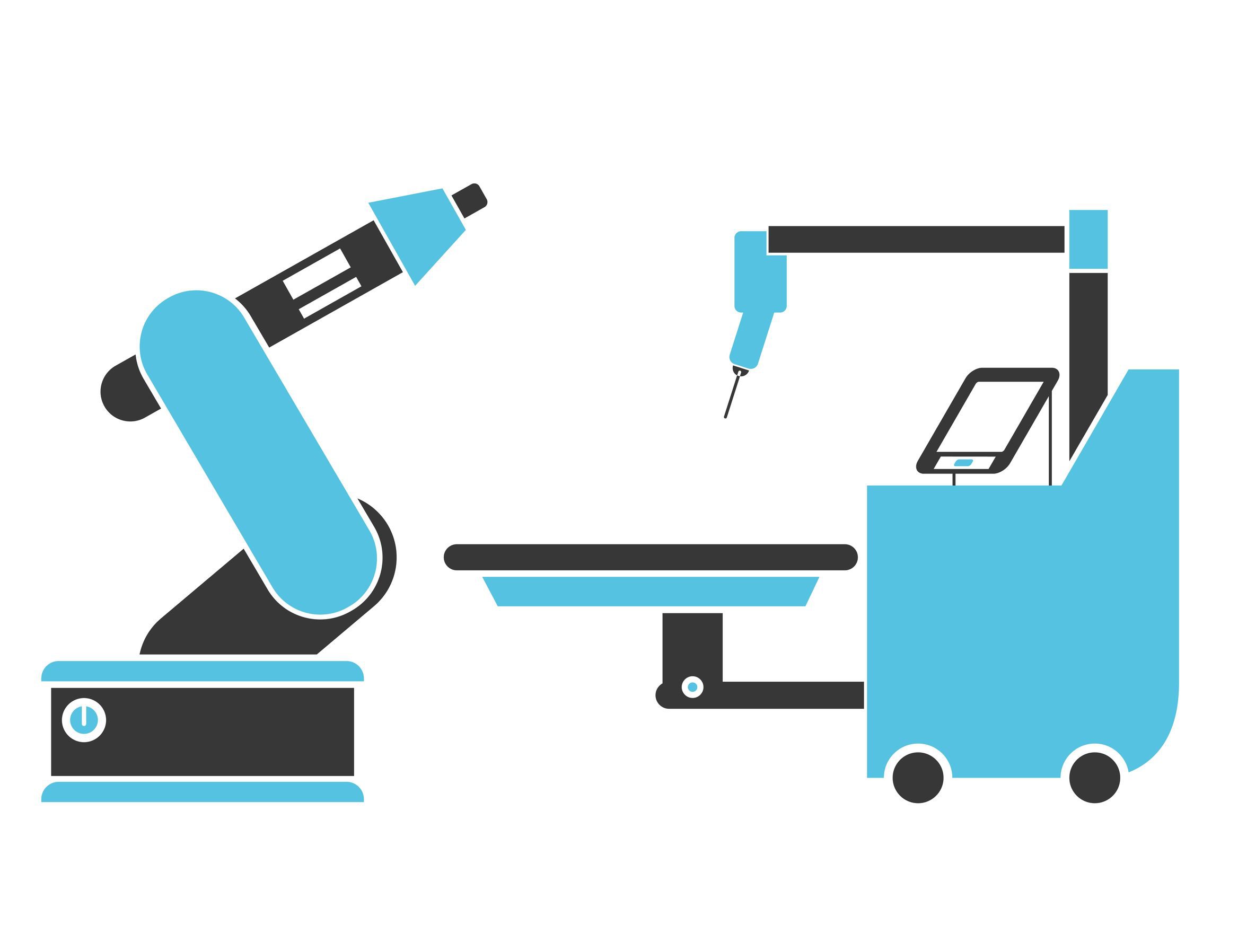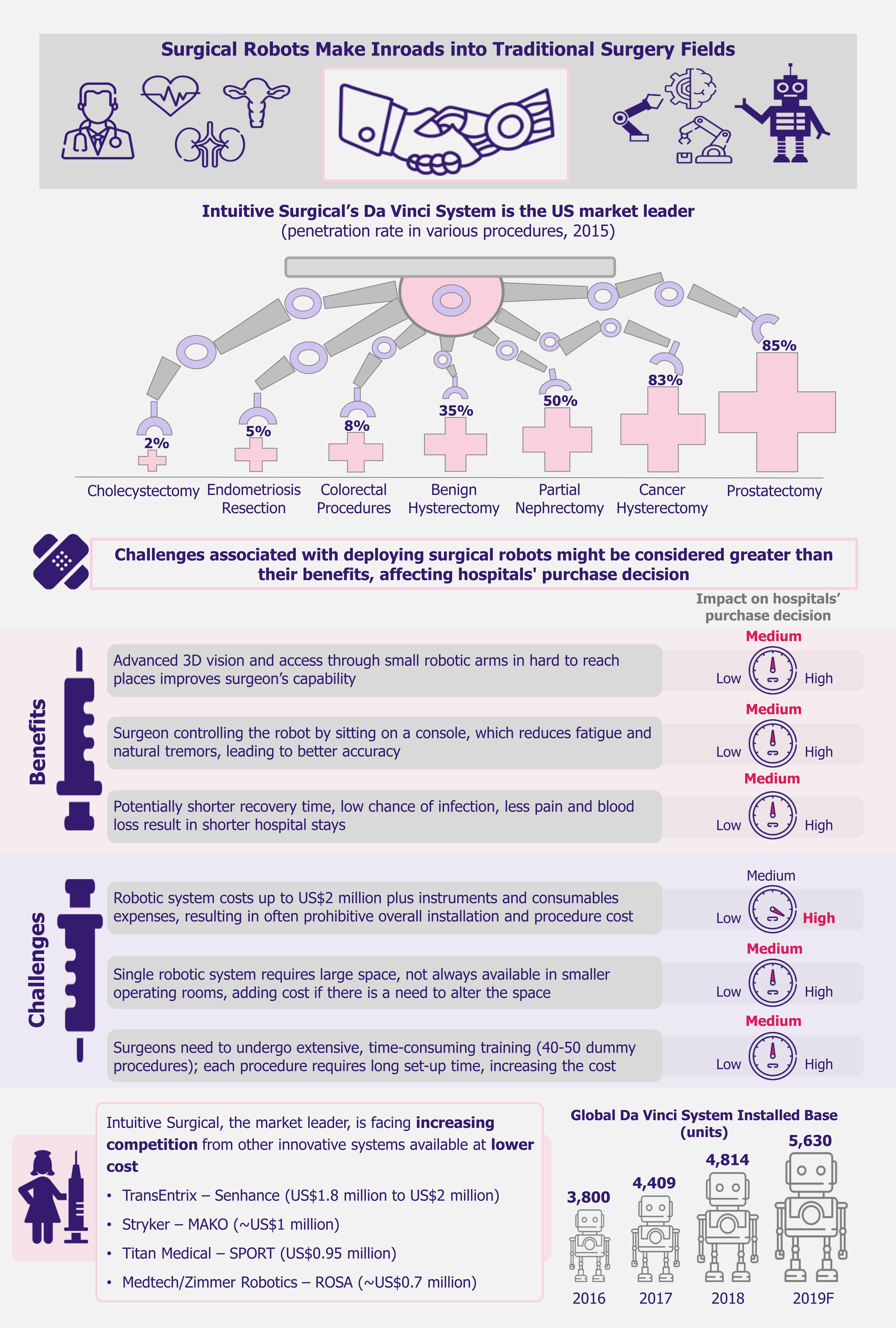Global economy has slowed down in response to coronavirus. Factories in China and many parts of Europe have been forced to halt production temporarily as some of the largest manufacturing hubs in the world battle with the virus. While the heaviest impact of the virus has been (so far) observed in China, global economy too is impacted as most industries’ global supply chains are highly dependent on China for small components and cheaper production rates.
China is considered to be the manufacturing and exporting hub of the world. Lower labor costs and advanced production capabilities make manufacturing in China attractive to international businesses. World Bank estimated China’s GDP in 2018 to be US$13.6 trillion, making it the second largest economy after the USA (US$20.58 trillion). Since 1952, China’s economy has grown 450 fold as compared with the growth rate of the USA economy. International trade and investment have been the primary reason for the economic growth of the country. This shows China’s strong position in the world and indicates that any disturbances in the country’s businesses could have a global effect.
On New Years’ Eve 2019, an outbreak of a virus known as coronavirus (COVID-19) was reported in Wuhan, China to the WHO. Coronavirus is known to cause respiratory illness that ranges from cough and cold to critical infections. As the virus spreads fast and has a relatively high mortality rate, the Chinese government responded by quarantining Wuhan city and its nearby areas on January 23, 2020. However, this did not contain the situation. In January 2020, WHO designated coronavirus a “public health emergency of international concern” (PHEIC), indicating that measures need to be taken to contain the outbreak. On March 11, 2020, WHO called coronavirus a pandemic with the outbreak spreading across about 164 countries, infecting more than 190,000 people and claiming 7,800+ lives (as of March 18, 2020).
Coronavirus threatening businesses in China and beyond
Businesses globally (and especially in China) are feeling the impact of coronavirus. Workers are stuck in their homes due to the outbreak. Factories and work places remain dormant or are running slower than usual. Also, the effects of coronavirus are spreading across the globe. Initially, all factory shutdowns happened in China, however, the ripple effects of the outbreak can now be seen in other parts of the world as well, especially Italy.
Automotive industry
Global automobile manufacturers, such as General Motors, Volkswagen, Toyota, Daimler, Renault, Honda, Hyundai, and Ford Motors, who have invested heavily in China (for instance, Ford Motor joined ventured with China’s state-owned Chongqing Changan Automobile Company, Ltd., one of China’s biggest auto manufacturers) have shut down their factories and production units in the country. According to a London-based global information provider IHS Markit, Chinese auto industry is likely to lose approximately 1.7 million units of production till March 2020, since Wuhan and the rest of Hubei province, where the outbreak originated, account for 9% of total Chinese auto production. While the factories are reopening slowly (at least outside the Wuhan city) and production is expected to ramp up again, it all depends on how well the outbreak is contained. If the situation drags on for few months, the auto manufacturers might face significant losses which in turn may result in limited supply and price hikes.
American, European, and Japanese automobile manufacturers, among others, are heavily dependent on components supplied from China. Low production of car parts and components in China are resulting in supply shortages for the automakers globally. UN estimates that China shipped close to US$35 billion worth of auto parts in 2018. Also, according to the US Commerce Department’s International Trade Administration, about US$20 billion of Chinese parts were exported to the USA alone in 2018. A large percentage of parts are used in assembly lines that are used to build cars while remaining are supplied to retail stores. Supply chain is crucial in a connected global economy.
Coronavirus outbreak poses a risk to the global automotive supply chain.
South Korea’s Hyundai held off operations at its Ulsan complex in Korea due to lack of parts that were supposed to be imported from China. The plant manufactures 1.4 million vehicles annually and the shutdown has cost approximately US$500 million within just five days of shutting down. However, Hyundai is not the only such case. Nissan’s plant in Kyushu, Japan adjusted its production due to shortage of Chinese parts. French automaker Renault also suspended its production at a plant in Busan, South Korea due to similar reasons. Fiat Chrysler predicts the company’s European plant could be at risk of shutting down due to lack of supply of Chinese parts.
However, very recently, automobile factories in China have started reopening as the virus is slowly getting contained in the region. While Volkswagen has slowly started producing in all its locations in China, Nissan has managed to restart three of its five plants in the country.
That being said, auto factories are facing shutdowns across the world as coronavirus becomes a pandemic. Ford Chrysler has temporarily shut down four of its plants in Italy as the country becomes the second largest affected nation after China.
Automobile supply chains are highly integrated and complex, and require significant investments as well as a long term commitment from automobile manufacturers. A sudden shift in suppliers is not easy. The virus is spreading uncontrollably across Europe now and if France and Germany are forced to follow Italy’s footsteps of shutting down factories to contain its spread, this will spell doom for the auto sector as the two countries are home to some of the biggest automobile manufacturers in the world.
Technology industry
China is the largest manufacturer of phones, television sets, and computers. Much of the consumer technologies from smartphones to LED televisions are manufactured in China. One of the important sectors in the technology industry is smartphones.
The outbreak of coronavirus is bad news for the technology sector, especially at the verge of the 5G technology roll-out. Consumers were eagerly waiting for smartphone launches supporting 5G but with the outbreak, the demand for smartphones has seen a decline. According to the China Academy of Information and Communications Technology, overall smartphone shipments in China fell 37% year over year in January 2020.
Foxconn, which is a China-based manufacturing partner of Apple, has iPhone assembling plants in Zhengzhou and Shenzhen. These plants, which make up a large part for the Apple’s global iPhone assembly line, are currently facing a shortage of workers that will ultimately affect the production levels of iPhone in these factories. According to Reuters, only 10% of workers resumed work after the Lunar New Year holiday in China. As per TrendForce, a Taiwanese technology forecasting firm, Apple’s iPhone production is expected to drop by 10% in the first quarter of 2020.
Moreover, Apple closed down all its retail stores and corporate offices in the first week of February 2020 in China in response to the outbreak. On March 13, 2020, it reopened all of its stores in China as the outbreak seems to be under control. However, while Apple seems to recover from the outbreak in China, it is equally affected by store shutdowns in other parts of the world (especially Europe). On March 11, Apple announced that all stores in Italy will be closed until further notice. Italy has been hit by the virus hard after China. The Italian government imposed a nationwide lockdown on the first week of March 2020.
On the other hand other multinational smartphone giants such as LG, Sony Mobile, Oppo, Motorola, Nokia, and many others have delayed their smartphone launches in the first quarter of 2020 due to the outbreak.
The coronavirus outbreak is more likely to be a disaster for smartphone manufacturers relying on China.
Other sectors such as LCD panels for TVs, laptops, and computer monitors are mostly manufactured in China. According to IHS Markit, there are five LCD factories located in the city of Wuhan and the capacity at these factories is likely to be affected due to the quarantine placed by the Chinese government. This is likely to force Chinese manufacturers to raise prices to deal with the shortage.
According to Upload VR, an American virtual reality-focused technology and media company, Facebook has stopped taking new orders for the standalone VR headset and also said the coronavirus will impact production of its Oculus Quest headset.
Shipping industry
In addition to these sectors, the new coronavirus has also hit shipping industry hard. All shipping segments from container lines to oil tanks have been affected by trade restrictions and factory shutdowns in China and other countries. Shipyards have been deserted and vessels are idle awaiting services since the outbreak.
According to a February 2020 survey conducted by Shanghai International Shipping Institute, a Beijing based think-tank, capacity utilization at major Chinese ports has been 20%-50% lower than normal and one-third of the storage facilities were more than 90% full since goods are not moving out. Terminal operations have also been slow since the outbreak in China. The outbreak is costing container shipping lines US$350 million per week, as per Sea-Intelligence, a Danish maritime data specialist.
According to Sea-Intelligence, by February 2020, 21 sailings between China and America and 10 sailings in the Asia-Europe trade loop had been cancelled since the outbreak. In terms of containers, these cancellations encompass 198,500 containers for the China-America route and 151,500 boxes for the Asia-Europe route.
Moreover, shutting down of factories in China has resulted in a manufacturing slowdown, which in turn is expected to impact the Asian shipping markets. European and American trade is also getting affected as the virus spreads to those continents. US retailers depend heavily on imports from China but the outbreak has caused the shipping volumes to diminish over the first quarter.
The USA is already in the middle of a trade war with China that has put a dent in the imports from China. National Retail Federation (world’s largest retail trade association) and Hackett Associates (US based consultancy and research firm) projects imported container volumes at US seaports is likely to be down by 9.5% in March 2020 from 2019. The outbreak is heavily impacting the supply chains globally and if factory shutdowns continue the impact is more likely to be grave.
Read our other Perspectives on US-China tensions: Sino-US Trade War to Cause Ripple Effect of Implications in Auto Industry and Decoding the USA-China 5G War
Other businesses
In addition to the auto, technology, and shipping industries, other sectors are also feeling the heat from the outbreak. Under Armour, an American sports clothing and accessories manufacturer, estimated that its revenues are likely to decline by US$50-60 million in 2020 owing to the outbreak.
Disney’s theme parks in California, Shanghai, Tokyo, and Hong Kong have been shut down due to the outbreak and this is expected to reduce its operating income by more than US$175 million by second quarter 2020.
Further, IMAX, a Canadian film company, has postponed the release of five films in January 2020, due to the outbreak.
Several fast food chains have been temporarily shut down across China and Italy, however, most of them have opened or are in the process of reopening in China as the outbreak is slowly coming under control there. While the global fast food and retail players have limited exposure in China, they are suffering huge losses in Europe, especially Italy. The restaurant sector is severely impacted there, where all restaurants, fast food chains, and bars have been shut down temporarily till April 3 in an attempt to contain the outbreak.
Another significantly affected industry is the American semiconductor industry as it is heavily connected to the Chinese market. Intel’s (a US-based semiconductor company) Chinese customers account for approximately US$20 billion in revenue in 2019. Another American multinational semiconductor and telecommunications equipment company, Qualcomm draws approximately 47% of its revenue from China sales annually. The outbreak is making its way through various industries and global manufacturers could now see how much they have become dependent on China. Although the virus seems to be getting under control as days pass, the businesses are not yet fully operational. Losses could ramp up if the virus is not contained soon.
Housebound consumers dealing with coronavirus
Since the virus outbreak, people across many countries are increasingly housebound. Road traffic in China, Italy, Iran, and other severely affected countries has been minimized and public places have been isolated. People are scared to go out and mostly remain at home. This has led local businesses such as shopping malls, restaurants, cinemas, and department stores to witness a considerable slowdown, while in some countries being forced to shut down.
TV viewing and mobile internet consumption on various apps have increased after the outbreak. According to QuestMobile, a research and consultancy firm, daily time spent with mobile internet rose from 6.1 hours in early January 2020 to 6.8 hours during Lunar New Year (February 2020).
While retail outlets and other businesses are slower, people have turned to ordering products online. JD.com, a Chinese online retailer, reported that its online grocery sales grew 215% (year on year) to 15,000 tons between late January and early February 2020. Further, DingTalk, a communication platform developed by Alibaba in 2014, was recorded as the most downloaded app in China in early February 2020.
EOS Perspective
International businesses depend heavily on Chinese factories to make their products, from auto parts to computer and smartphone accessories. The country has emerged as an important part in the global supply chain, manufacturing components required by companies globally. The coronavirus outbreak has shaken the Chinese economy and global supply chains, which in turn has hurt the global economy, the extent of which is to be seen in the months to come. Oxford Economics, a global forecasting and analysis firm, projected China’s economic growth to slip down to 5.6% in 2020 from 6.1% in 2019, which might in turn reduce the global economic growth by 0.2% to an annual rate of 2.3%.
A similar kind of outbreak was seen in China in late 2002 and 2003, with SARS (Severe Acute Respiratory Syndrome) virus. China was just coming out of recession in 2003 and joined the World Trade Organization, attaining entrance to global markets with its low cost labor and production of cheaper goods. The Chinese market was at its infancy at that time. As per 2004 estimates by economists Jong-Wha Lee and Warwick J. McKibbin, SARS had cost the global economy a total of about US$40 billion. After SARS, China suffered several months of economic retrenchment.
The impact of coronavirus on Chinese as well as global economy seems to be much higher than the impact of SARS, since COVID-19 has spread globally, while China has also grown to be the hub for manufacturing parts for almost every industry since the SARS outbreak. In 2003, China accounted for only 4% of the global GDP, whereas in 2020, its share in the global GDP is close to 17%.
Currently, the key challenge for businesses would be to deal with and recover from the outbreak. On the one hand, they need to protect their workers safety and abide by their respective governments’ regulations, and on other hand they need to safeguard their operations under a strained supply chain and shrunken demand.
In the current landscape, many businesses in China have reopened operations but the outbreak is rapidly spreading to other parts of the world (especially Europe and the USA), where it is impacting several business as well as everyday lives. The best thing for manufacturing companies in this scenario is to re-evaluate their inventory levels vs revised demand levels (which may differ from industry to industry), and consider a short-term re-strategizing of their global supply chains to ensure that raw materials/components or their alternates are available and accessible – bearing in mind their existing production capability with less workers and customer needs during this pandemic period.
With the rapid spread of the virus, it seems that the outbreak is likely to cause considerable damage to the global economy (both in terms of production levels as well as psychological reaction on stock markets), at least in the short term, i.e. next 6 months. However, many experts believe that the situation should soon start coming under control at a global level. For instance, some experts at Goldman Sachs, one of the world’s largest financial services companies, believe that while this pandemic will bring the lowest growth rate of the global GDP in the last 30 years (expected at 2% in 2020), it does not pose any systematic risks to the world’s financial system (as was the case during the 2008 economic crisis).
Having said that, it is difficult to estimate what real impact the coronavirus will have on the global economy yet, and if opinions such as Goldman Sachs’ are just a way to downplay the situation to keep the investors calm. It is more likely to depend on how long the virus continues to spread and linger and how effectively do governments around the world are able to contain it.





